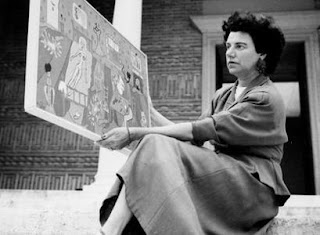The marketing world has long been familiar with the
“pay-to-play” style of doing business. There are many websites and publications
where articles are published or institutions are listed in rankings only when money
changes hands. For instance, many magazines that cover issues of interest to
lawyers charge contributors hundreds of dollars to publish an article, since authors displaying their expertise is a form of advertising their services to potential
clients.
In the art world, people don’t like to talk about the growth
of “pay-to-play.” Spending money to have your work reach the public smacks of
self-promotion and vanity. But increasingly, and quietly, arts organizations
are charging artists to present their work. Many literary publishers are asking
writers to buy a certain number of books in order to cover their costs; more and more literary
magazines, presses, and contests are charging ever-larger fees for submissions; many theaters
are requiring playwrights and performers to pay for expenses such as space
rental, tech services, and marketing; and some galleries are charging artists to
show their work.
I don’t blame arts organizations for passing some costs
along to artists. It’s not as if nonprofit theaters, publishers, and galleries
are raking in big bucks that they’re hiding from artists. The arts
organizations are under enormous financial pressures that have forced them to
adopt the “pay-to-play” model, often against their own inclinations. I do think
it’s worth discussing the “pay-to-play” phenomenon in the arts, though, because
it has implications for whose work is presented, and how and when artists
attempt to reach the public.
There was a time in the not-so-distant past when the arts
were often supported by wealthy patrons. I recently visited the Peggy Guggenheim Collection in Venice, for example, and was reminded that Peggy Guggenheim supported a number of artists and writers in the mid-twentieth
century, including the painter Jackson Pollock and the writer Djuna Barnes.
 |
| Peggy Guggenheim |
If
you read the letters of the poet Rainer Maria Rilke, you can see that he
diligently corresponded with his numerous patrons, updating them on his
artistic progress and requesting funds or places to work.
One cause of the current “pay-to-play” situation may be the
increasing number of artists competing for funds and a public. For example, the annual conference of the Association of Writers & Writing Programs in North
America began in 1972 with a couple of hundred attendees. The most recent
conferences have all averaged well above 10,000 attendees. With so many artists
vying for attention and venues to present their work, arts organizations have
also proliferated. The funding sources for these organizations have not kept
pace, and government support for the arts in the United States, for one, has declined or
remained mostly flat for many years.
Another reason that arts organizations are asking artists
for support is that the wealthiest philanthropists currently are finding other
outlets for their gifts. In the San Francisco Bay Area, where I live, for
instance, we have recently seen a wave of hospital construction and rebuilding,
including the stunning Lucile Packard Children’s Hospital in Palo Alto; and
UCSF Benioff Children’s Hospital and the Zuckerberg San Francisco General
Hospital renovation, both in San Francisco. Those are wonderful additions to
our communities, and my own family has benefited from the fantastic care at one
of these institutions. But where is the tech philanthropist who is going to support
independent theaters or literary publishing? You don’t have to be in the arts
to fund the arts. The Guggenheims didn’t make their fortune as surrealist
painters, but Peggy Guggenheim helped surrealist painters by buying their work.
The downside of the current regimen in the arts is that many
artists can’t afford to “pay-to-play.” Their work is at risk of being lost in
today's art economy. Even those who can occasionally afford to fund-raise
and use personal resources to launch a project in the arts may find that their
ability to generate funds through crowdsourcing campaigns is not as great as
their creative output, forcing them to limit the number and ambition of their
projects.
I would like to see more discussion of “pay-to-play” in the
arts, not to point fingers at nonprofit arts organizations, but to explore the
implications of this phenomenon and to try to brainstorm alternatives.
Zack’s most recent book of poems, Irreverent Litanies
Zack’s most recent translation, Bérénice 1934–44: An Actress in Occupied Paris by Isabelle Stibbe
How to Get Published
Getting the Most from Your Writing Workshop
How Not to Become a Literary Dropout
Putting Together a Book Manuscript
Working with a Writing Mentor
How to Deliver Your Message
Does the Muse Have a Cell Phone?
Why Write Poetry?
Poetic Forms: Introduction; The Sonnet, The Sestina, The Ghazal, The Tanka, The Villanelle
Praise and Lament
How to Be an American Writer
Writers and Collaboration
Types of Closure in Poetry


